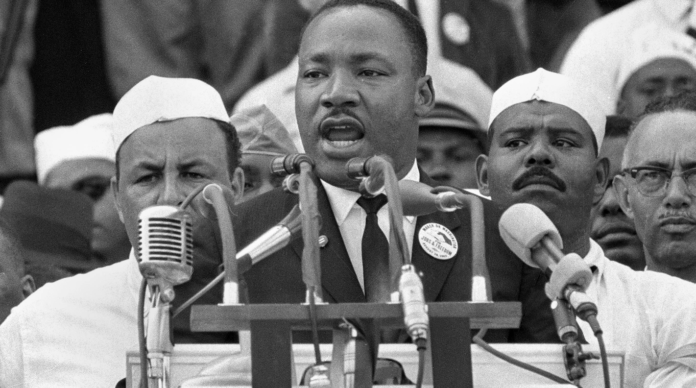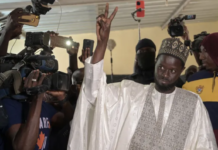One common response to the national anthem protests originated by Colin Kaepernick is to disparage them as polarizing. Joe Scarborough, host of Morning Joe, summed up this particular critique in a tweet:
This may be unpopular but it is a political reality:
Every NFL player refusing to stand for the national anthem helps Trump politically.
— Joe Scarborough (@JoeNBC) September 24, 2017
The idea here is that kneeling NFL players are committing an act of such blatant disrespect that they hand Trump an easy image with which to demagogue. Often attendant to the idea that protesting players are shooting themselves in the foot is the notion that in some other era, black protest proved to be a unifying force that altered the psychology of some critical mass of open-minded whites.
David Leonhardt offers a version of this in Monday’s New York Times:
In one of his first prominent speeches, during the 1955 Montgomery bus boycott, Martin Luther King Jr. spoke of “the glory of America, with all its faults.” At the March on Washington, King described not just a dream but “a dream deeply rooted in the American dream.” Before finishing, he recited the first seven lines of “My Country, ’Tis of Thee,” ending with “Let freedom ring!”
A year-and-a-half later, marchers from Selma to Montgomery carried American flags. Segregationist hecklers along the route held up Confederate flags. Within six months, Lyndon Johnson had signed the Voting Rights Act.
Leonhardt goes on to contrast this species of activism, which aligned “the civil-rights movement with the symbols and ideals of America,” with kneeling during the national anthem, which presumably signals opposition to those same symbols. Leonhardt is sympathetic to the aims of Kaepernick’s protest but he contrasts this “angry” approach with the “smart” approach of the civil-rights movement.
As The Washington Post noted last year, only 22 percent of all Americans approved of the Freedom Rides, and only 28 percent approved of the sit-ins. The vast majority of Americans—60 percent—had “unfavorable” feelings about the March on Washington. As FiveThirtyEight notes, in 1966, 63 percent of Americans had a negative opinion of Martin Luther King. The popular hostility toward King extended to the very government he tried to embrace—King was bugged and harassed by the FBI until the end of his life. His assassination sprang from the deep hostility with which he was viewed, not by a fringe radical minority, but by the majority of the American citizenry.
That the civil-rights movement was unpopular is not shocking to the activists who protested at the time. “When I’m told by people, ‘Thank you for what you did,’ I almost want to look around and see who they’re talking to,” Joyce Ladner told the Post.* The paper quotes Julian Bond satirizing the kind of history Leonhardt’s argument is premised—“Rosa sat down, Martin stood up and then the white folks saw the light and saved the day.”
Leonhardt is a smart and knowledgeable columnist. It is thus surprising to see him embrace a mythical rendition of the civil-rights movement that runs counter to the the facts and figures of the time. But Leonhardt’s column seems less interested in offering an accurate apprehension of the civil-rights movement than in employing the civil-rights movement as a club against radicalism in general, and the Bernie Sanders-wing of the left in particular:
Getting smart means nominating progressive candidates who can win, even if they aren’t progressive on every issue. Getting smart means delaying internal fights (like single-payer health care) and unifying against Trump’s agenda (as Democrats in Congress have). Getting smart means understanding, as civil-rights leaders did, that American symbols are a worthy ally.
Reading this you would think Blanche Lincoln was primaried, that Alison Lundergan Grimes was done in by her implacable leftist fanaticism, that Evan Bayh never ran in 2016, that Bob Casey wasn’t pro-life, that Joe Manchin wasn’t a senator. But more, you’d think that “smart” necessarily equated with “centrist.” In fact, the very history Leonhardt summons says the opposite.
Kaepernick did not inaugurate his protest in hopes of helping elect more centrist Democrats, or any kind of Democrat. That said, he was not immune to compromise. When his initial efforts were met with disdain and deemed disrespectful, he actually consulted a group of veterans to see how he might better pursue a protest. That is the origin of Kaepernick kneeling, and the fact that it too has been met with scoffs points to deeper problem. If young people attempting to board a bus are unacceptable, if gathering on the National Mall is verboten, if preaching nonviolence gets you harassed by your own government and then killed, if a protest founded in consultation with military veterans is offensive, then what specific manner of protest is white America willing to endure?
It’s almost as if the manner of protest isn’t the real problem.








